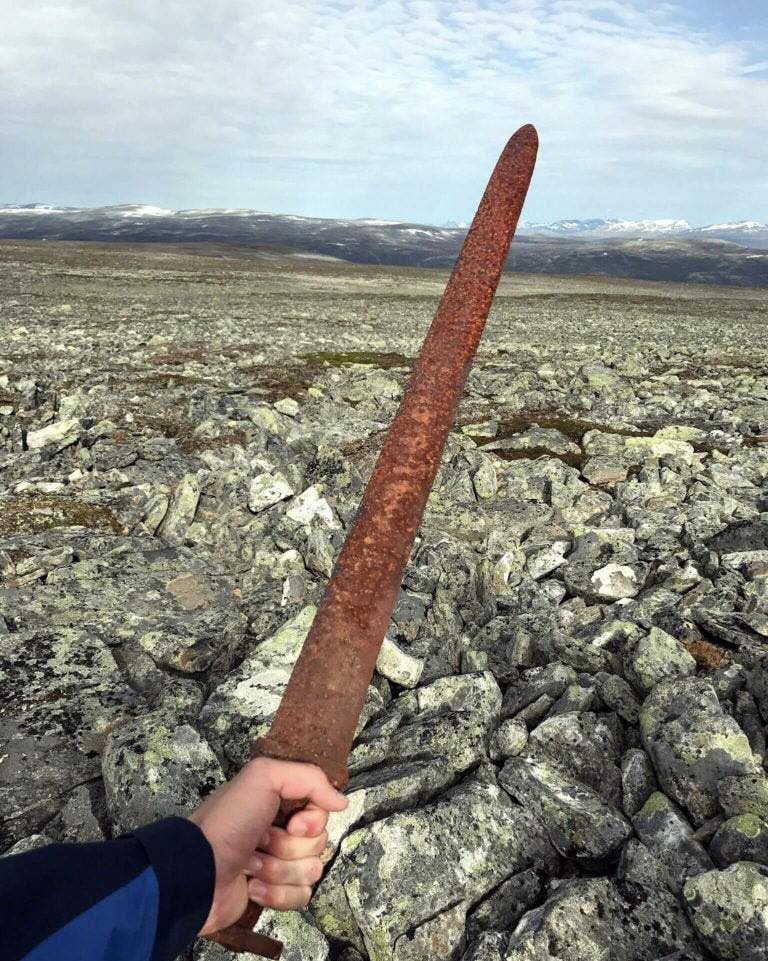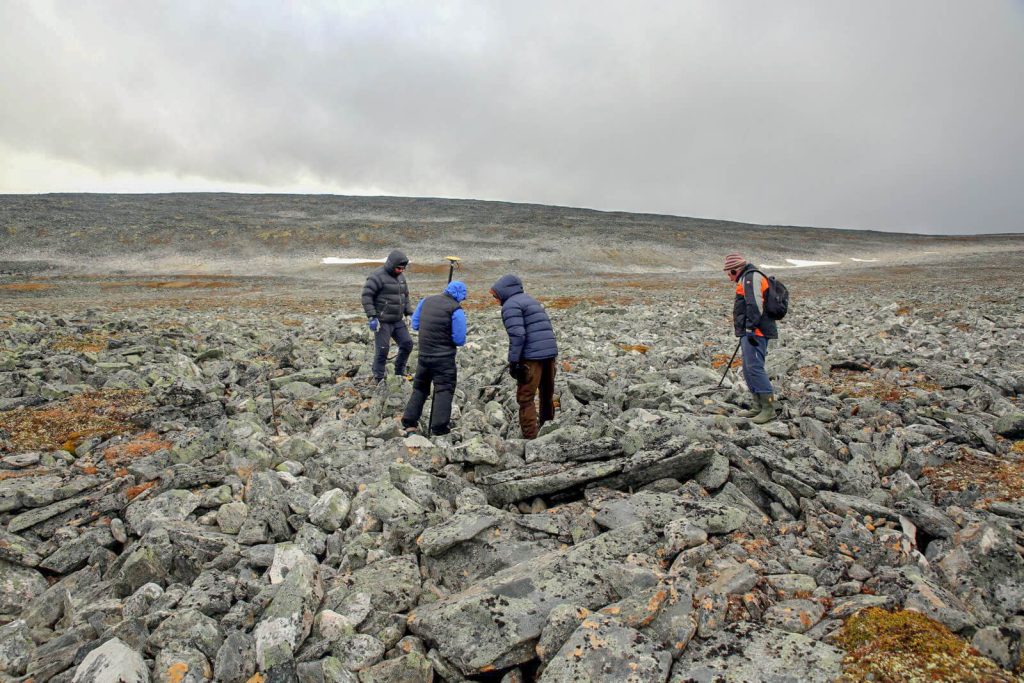On Friday, September 2, 2017, we received extraordinary news that a Viking sword had been discovered at a high-altitude location in our county. A reindeer hunter had stumbled upon this remarkable artifact, and the accompanying photographs were breathtaking. One image stood out, showing the hunter proudly holding an exceptionally well-preserved Viking sword.
The discovery immediately set our minds racing with possibilities. Was this a lone find, or could other artifacts be hidden nearby? Without delay, we coordinated with the Museum of Cultural History and the National Park authorities to inspect the site. The next day, two members of our Secrets of the Ice team journeyed to the location with the finder, Einar Åmbakk, another reindeer hunter, a local metal detectorist, and a local archaeologist. The group started their trek from a summer farm, braving strong winds and navigating the mountainous terrain for three hours before reaching the discovery site.

Although the reindeer hunters hadn’t marked the exact GPS location of the find, the coordinates were retrieved from the geographical data embedded in their photos—a crucial detail. Without these coordinates, pinpointing the precise location in a landscape with few distinguishing features would have been challenging. Guided by a GPS device, the team quickly relocated the find spot.
The site was a scree-covered area at an elevation of 1640 meters above sea level, bearing traces of permafrost movement. According to Åmbakk, the sword had been lying hilt-down among the stones, with part of the blade visible above the surface. He had spotted the blade, pulled it out, and realized the gravity of his discovery—a Viking sword.
The position of the sword raised intriguing questions. It seemed improbable that the sword had reappeared on the surface due to permafrost movement, as there were no visible scratches or bends on the metal. Most likely, the sword had remained in its original position, perhaps sliding slightly downward between the stones over time.
The team meticulously examined the site, both visually and with a metal detector, covering a radius of up to 20 meters. Despite their thorough efforts, no additional artifacts were found. This suggested that the sword was an isolated find—a unique and remarkable relic of the Viking era.
The preservation of the sword was nothing short of extraordinary. It is astonishing to consider that this artifact survived on the surface for over a thousand years. Similar isolated discoveries of iron arrowheads, some even older than the sword, have been made in the high mountains. The preservation is likely due to a combination of factors: the high quality of the iron, the cold temperatures at such altitudes, and the protective cover of snow and ice for most of the year. Unfortunately, the sword’s grip, which was likely made of organic materials such as bone, wood, or leather, had not withstood the test of time.
The question of how the sword came to rest at such a remote, high-altitude location remains a mystery. The absence of nearby artifacts or indications of a burial or ritual offering rules out those possibilities. It also seems unlikely that the sword was simply lost and left behind, as a Viking would never have willingly abandoned such a prized possession.

The location of the find—on rough, scree-covered terrain—offers additional clues. This area is not a practical route for travel, as better paths exist nearby. It is possible that the individual who left the sword behind was caught in a snowstorm and became disoriented. This theory suggests a tragic scenario: the sword’s owner, a Viking, may have succumbed to the harsh mountain conditions, perhaps from exposure. Yet, if this is true, it raises further questions. Was he traveling alone in the high mountains, armed only with his sword? The circumstances remain puzzling.
The idea that the Viking perished here is both compelling and haunting. If his body had been discovered just a few hundred meters further east, near the ice patches, we might have found something akin to Norway’s version of Ötzi, the famous Ice Man. However, any remains of the Viking are long gone, leaving only the sword to hint at the drama that unfolded here over a millennium ago.
The sword itself is dated to approximately AD 850–950, placing it firmly within the Viking Age. Its survival against the odds and its discovery in such a remote location make it a significant archaeological find. It provides a rare glimpse into the life—and perhaps the final moments—of a Viking who ventured into the high mountains, never to return.

This discovery invites us to reflect on the challenges and risks faced by people of the Viking Age. What drove this individual to ascend to such an unforgiving place? Was it necessity, exploration, or perhaps even desperation? While the exact story behind the sword may never be known, its discovery enriches our understanding of Viking history and serves as a poignant reminder of the resilience and vulnerability of those who lived long before us.
As we studied the sword and its find spot, we were reminded of the fragile interplay between human artifacts and the natural world. The high-altitude conditions that preserved this remarkable weapon for centuries are now changing due to the warming climate. This discovery underscores the importance of acting swiftly to study and protect such treasures before they are lost forever.
The Viking sword stands as a testament to the endurance of history and the mysteries of the past. Its discovery not only sheds light on the Viking Age but also inspires us to continue exploring and preserving the rich tapestry of human history.





